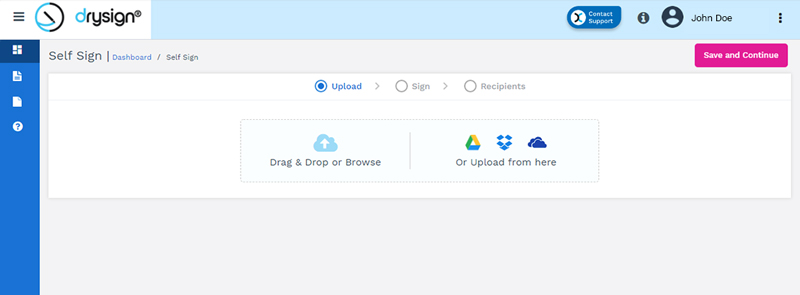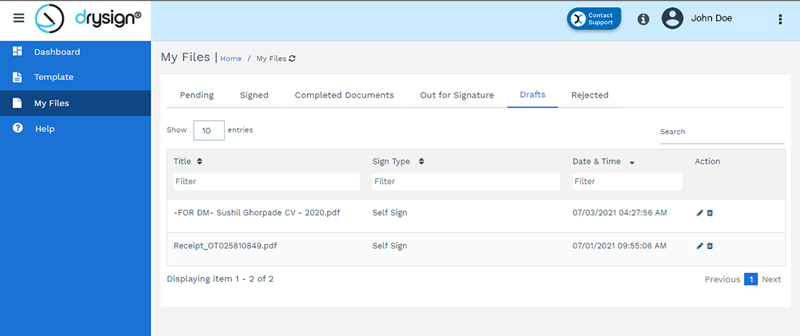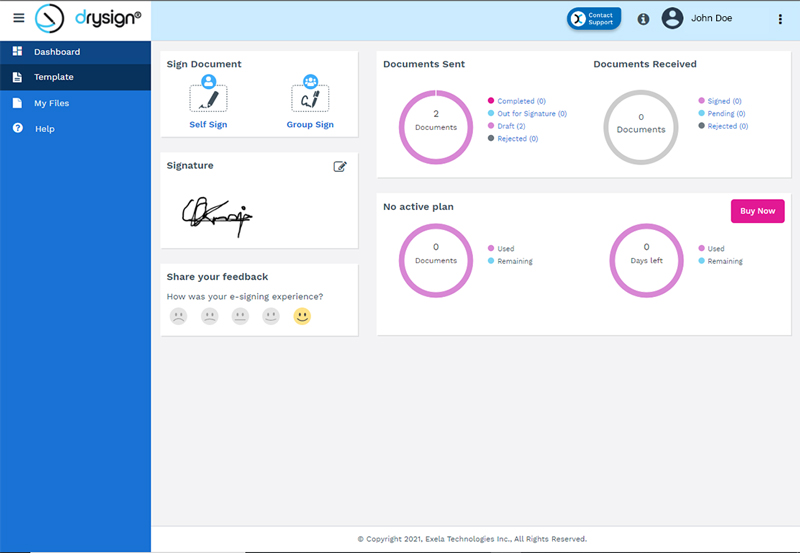The digital economy, also known as the ‘Internet economy,’ is taking shape and transforming conventional notions about how businesses are structured and how consumers obtain goods, services, and information online. This new way of doing business is the result of the hyper-connectivity of billions of people, data exchange, and processes through the internet.
The term ‘Digital Economy’ was coined in the 1990s and defined itself as the economic activity – commercial and professional transactions that take place online.
“Every industry and every organization will have to transform itself in the next few years. What is coming at us is bigger than the original internet and you need to understand it, get on board with it and figure out how to transform your business.” --- Tim O'Reilly.
This change has been the catalyst for transformative technology that some of us are just now hearing of, like IoT, Blockchain, Automation, Virtual Reality, Electronic Signatures, etc. These technologies help strengthen the trust in the digital economy and have witnessed significant improvements and evolvements through various technological initiatives.
The rise of the use of electronic signatures, during the COVID-19 pandemic, was more out of necessity than a comprehensive understanding of this technology. However, it is to the benefit of today’s business leaders to find out everything there is to know about this new cutting-edge way of doing business.
Swiftly replacing traditional wet-ink methods of signatures, e-signature solutions like DrySign are the future of secure and fast exchange of documents that need authentication via signatures, for ex: contracts, NDA’s, sales agreements, and much more.
What is an Electronic Signature?
Electronic signatures are symbols or other data in the digital form attached to an electronically transmitted document to verify the sender’s intent to sign the document – simply put, a technology that allows a person to sign a document online. In the US, electronic signatures are legally recognized by the Electronic Signatures in Global and National Commerce (ESIGN) Act and the Uniform Electronic Transactions Act (UETA). Both laws provide the following:
- No contract, signature, or record shall be denied legal effect solely because it is in electronic form
- A contract relating to a transaction cannot be denied legal effect solely because an electronic signature or record was used in its formation A foundation for online signatures, the ESIGN Act, a federal law, was passed in 2000 and was preceded by UETA which was introduced in 1999. These regulations grant legal recognition to electronic signatures and records if all parties to a contract choose to use electronic documents and sign them electronically.
Electronic signatures are represented digitally but can take many different forms and can be generated by various technologies. Some users use e-signatures to electronically sign and manage the execution of contracts by:
- Contactless transactions through chips and pins
- Biometric verification and signatures (fingerprints or facial recognition)
- Clicking on the boxes (I accept or submit) in online transactions
- Mentioning names at the end of an email
Electronic and digital signatures, although used interchangeably, mean different things. While electronic signatures prove the intent and consent of the person, a digital signature is the encryption technology that supports electronic signatures and makes them as secure as they are. Using an electronic signature solution that employs digital signature technology, like DrySign, is the safest step to enter this world of digital business.
Also Read: Transforming SMBs with Digital Signatures
Electronic Signatures simplify the Digital Economy
Barack Obama once said, ‘’The internet is not a luxury; it is a necessity,’’ and how true that is! Electronic signatures are fast becoming the fundamental pillar of the digital world, proving to be a catalyst for increased connectivity and innovations, thus driving economic growth.
Last year, the global economy contracted by 4.4% due to the current crisis. But at the same time, a trend set into acceleration: Digitization, which enhanced the digital capabilities for various sectors, including E-commerce, Banking, Finance, IT, etc. The rising demand for digital transactions, in turn, increased security concerns across various organizations globally, pushing the need to adopt advanced technologies in countries worldwide. As a result, the ever-expanding E-commerce giants like Amazon, Flipkart, Alibaba, Myntra, etc., started practicing and implementing E-Signature technology across the globe.
Many sectors worldwide have recognized that contract signings and other document workflows that need physical signatures can be conducted online with the help of e-signatures. This affirms the legal value of e-signatures as a key commercial imperative for digital trade and exchange performed online. E-signatures boost the digital economy by speeding up the business process and closing deals faster by eliminating issues and barriers that have been known to delay in-person traditional signing ways. E-signatures can be gathered in a matter of minutes, thus increasing operational efficiency and boosting transparency in signing processes.
E-signature solutions like DrySign that are legally compliant with international and national laws and use digital signature encryption help build trust in digital transactions, which is crucial for big corporations and businesses. If managed appropriately, e-signatures can be a significant leveler, allowing businesses of all sizes to reap the benefits of the ever-expanding digital economy.
Benefits of Electronic signatures in the Digital Economy
The traditional pen and paper signatures were an integral part of business in the past. However, to suit the requirements of today’s world, there is a need to change to modern alternatives, like e-signature solutions. E-signature solutions like DrySign allow users to send, sign, and receive digital documents quickly, on the go. There are numerous benefits for industries and companies of every size across all sectors. Read on to find out how the implementation of electronic signatures in your daily workflows can benefit your business and keep it relevant in today’s digital economy:
Reduced Costs
Even being part of the new-age digital economy does not rid you of the costs of signing documents if you still follow traditional wet-ink methods. The digital nature of electronic signature solutions like DrySign means that you no longer have to bear costs you generally would in manual methods, for example, paper, ink, printing, human resource, logistics, etc. These reductions in operating expenses help improve the businesses’ bottom line, thus increasing ROIs.
Besides the usual cost-heads, manual methods also carry the cost of human errors. Ever had to reprint a document to sign because your signature doesn’t match? We bet!
US businesses waste $8 billion every year handling paper documents.
(Corp Magazine, 2015)
Increased Customer Security
The rapid growth of the digital economy has also brought along with it the ever-increasing fear of online fraud and other offenses that have the potential to destroy even the most stable businesses. Using e-signature solutions that use the highest technology to secure your data and vital documentation is your best bet.
DrySign e-signatures use smart tracking to know who has signed and where your document is still pending, allowing you to have complete monitoring and access to your document. In addition, DrySign also provides high-grade security measures such as robust audit trails, password-protected e-signing, time stamps etc.
Increased Productivity & Efficiency
Electronic signatures fuel productivity with a simpler and quicker coordination process. Moreover, they enhance client and employee experience by simplifying long, time-consuming processes. DrySign allows you to sign a PDF, Word, or any other type of document, without a hassle. Additionally, you can integrate it with any other application like Google Drive, DropBox, etc. Simply upload a document on your smartphone, laptop, or any other device, choose the signature and its contents, you can choose to add just your initials, or your full name with the date, etc. Once affixed, your document is ready to be sent!
Smart solutions like DrySign don’t even need the other party to have a DrySign account. How convenient is that?
To sum it up, electronic signature solutions are the only way to survive and thrive in this growing digital economy. Digital signature technology allows you to close deals, buy, sell, and grow in the digital world with the assurance of security and legal compliance.
DISCLAIMER: The information on this site is for general information purposes only and is not intended to serve as legal advice. Laws governing the subject matter may change quickly and Exela cannot guarantee that all the information on this site is current or correct. Should you have specific legal questions about any of the information on this site, you should consult with a licensed attorney in your area.
START DRYSIGNING

















